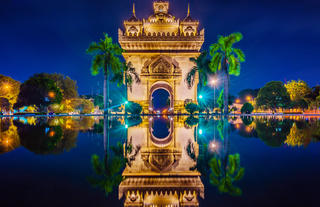Fondly known as 'the land of smiles', Thailand is commonly associated with gorgeous golden sand, palm-lined beaches, warm aquamarine waters, glorious temples and verdant jungle-clad mountains. Thailand is the primary travel hub of Southeast Asia, offering a diverse range attractions and activities to suit all tastes and budgets. Whether exploring the teeming metropolis of Bangkok, relaxing on the tropical beaches of the southern islands, scuba diving in the underwater wonderland off the coast, jungle trekking to hill tribe villages in the North, or discovering the ancient capitals, Thailand is filled with attractions to satisfy any interest.
Chiang Rai, the relaxed capital of Thailand’s northernmost province, offers a quieter and more contemplative alternative to lively Chiang Mai. Set against a backdrop of rolling, rainforest-clad hills, the city is known for its gentle pace, warm hospitality and rich tapestry of Lanna heritage. Among its standout landmarks is Wat Rong Khun, the iconic White Temple, celebrated for its luminous, intricately detailed façade and contemporary artistic vision. Equally noteworthy is Wat Phra Singh, showcasing classic Lanna architecture and serene interiors. Chiang Rai also presents a compelling cultural landscape through its museums: the Oub Kham Museum displays an eclectic collection of artefacts from the wider Lanna world, while the Hilltribe Museum and Education Centre offers thoughtful insight into the region’s diverse ethnic communities. With its blend of artistry, tradition and serene northern ambience, Chiang Rai provides a refined gateway to the cultural and natural wonders of the region.





Wedged between a number of larger neighbouring countries, Laos is often overlooked in favour of tourism giants such as Thailand and Vietnam. But these travellers are missing out on an extraordinarily scenic and culturally rich destination. Laos boasts a reputation as the least visited, least Westernised, and most untouched of all Indochinese nations. Only time will tell how long this will last, but while it does, visitors who choose to explore this nation’s remote areas will be richly rewarded. Laos’ primary drawcard is undoubtedly the mighty Mekong River which traverses the length of the country and is considered the second most biodiverse river in the world. In the north, the landscape is characterised by little-explored jungle-clad mountainous areas where visitors can witness the intriguing cultures of the various hill tribes that populate this region. Travellers on the hunt for cultural interest should head for the bustling capital of Vientiane, with its innumerable temples and Buddhist monuments. It is this variety of exotic wildlife, remote wilderness and remarkable cultural treasures that make Laos a truly unique and unforgettable holiday destination.
The small but charming village of Pakbeng sits at the midpoint between Huay Xai and Luang Prabang, where the Nam Beng River meets the Mekong, making it the quintessential stopover for travellers taking the scenic slow-boat journey through northern Laos. Quiet and unhurried, the village offers a handful of simple pleasures: a local market for basic supplies and a glimpse of daily life, a few modest temples, and a main street lined with thatch-roofed shops selling handmade trinkets and eateries serving traditional Lao dishes. Nearby, an elephant camp provides opportunities for respectful, close-up encounters with these gentle Asian giants. With its riverside setting and laid-back charm, Pakbeng offers a delightful pause between Mekong journeys.


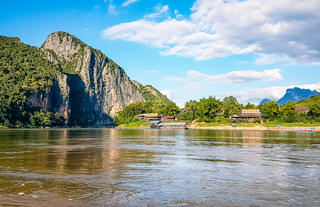
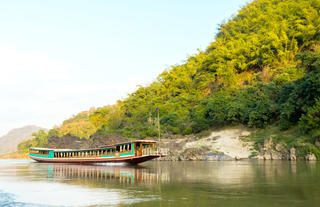
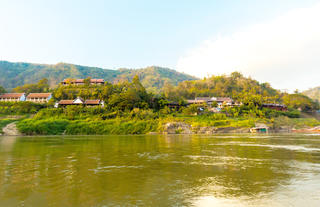
Oudomxay, a naturally beautiful and largely undeveloped province in northwestern Laos, is known for its mist-draped mountains, deep forests and remarkable cultural diversity, with numerous indigenous tribes calling the region home. Its capital, Muang Xay—often referred to simply as Oudomxay—is the main transport hub for northern Laos and an ideal base for travellers eager to explore the surrounding wilderness on foot. Highlights include the province’s many caves and waterfalls, the 600-year-old Phouthat Stupa perched above town, the revered Phachaosingkham Temple, and the tranquil Nam Hin Lake. Visits to traditional villages offer meaningful encounters with local communities and insight into centuries-old customs. For a gentler pace, Muang Xay’s lively night market provides an easygoing evening out, with stalls selling local dishes, drinks, handicrafts and clothing. Rugged, authentic and culturally rich, Oudomxay offers a rewarding glimpse into northern Laos beyond the well-trodden path.
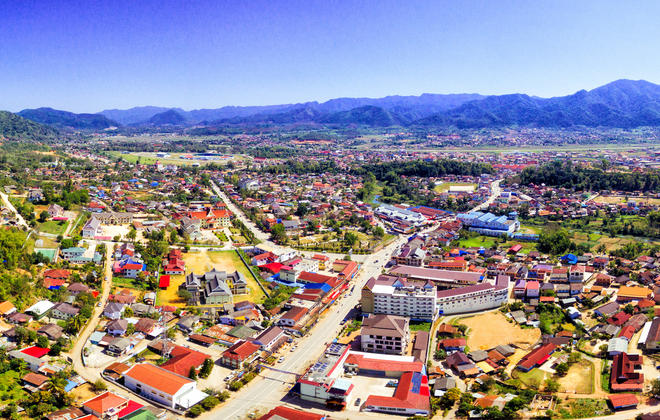
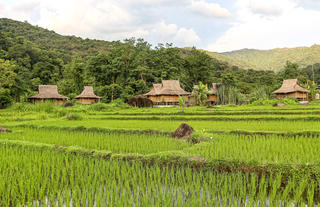



A charming town with elegant historical architecture and a distinctly French flavour, Luang Prabang in northern Laos is filled with interesting museums, bustling markets and traditional shops. 33 Buddhist temples dot the city.; the Haw Kham Royal Palace Museum and Wat Xieng Thong temple give travellers some background on and history of the Laotian people. Beyond the city, breathtaking nature and ancient sites await. Those who visit the Pak Ou Caves can see hundreds of Buddha statues accumulated there through the ages. The 180-foot Kuang Si Waterfalls, an hour’s drive out of the city, is one of the region’s natural highlights, with its layer upon cascading layer of turquoise pools and torrents.
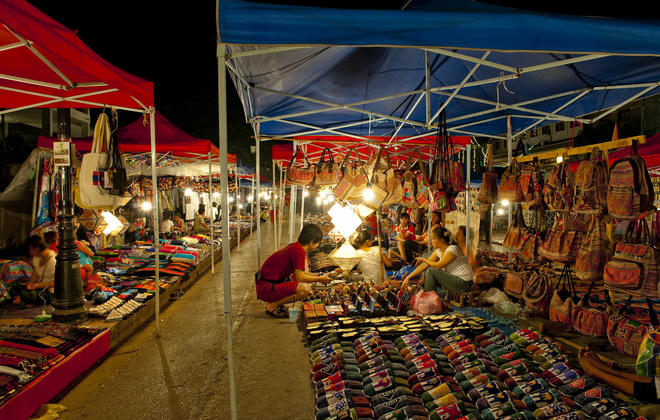




ViVientiane, the capital and largest city of Laos, offers a refreshing contrast to many Southeast Asian capitals—uncrowded, unhurried and imbued with a gentle, understated elegance. Set along the Mekong River, the city blends leafy boulevards, serene temples and evocative French-era architecture with a relaxed riverside lifestyle. Its spiritual heart is Pha That Luang, the nation’s most revered monument, a radiant 16th-century golden stupa symbolising Lao identity and Buddhist devotion. Travellers can wander between pavement cafés, atmospheric night markets and riverside restaurants, all of which reflect the city’s famously tranquil rhythm. Cultural highlights include the Laos National Museum, where thoughtfully curated exhibits trace the country’s long and complex history. With its calm disposition, historic charm and warm hospitality, Vientiane offers a captivating introduction to the soul of Laos.




